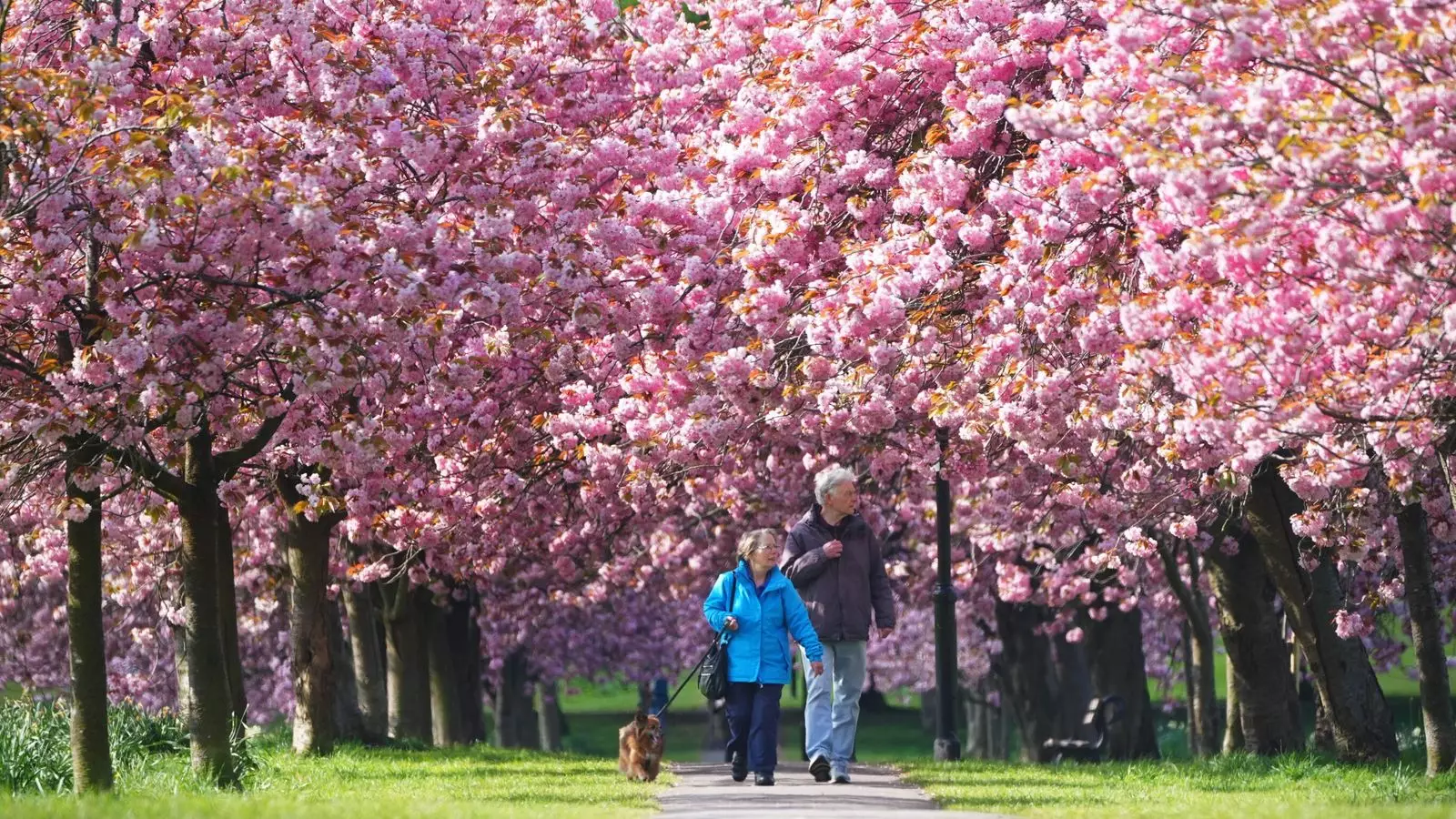As we venture deeper into spring, the weather in the UK has taken on a character akin to a melancholic symphony—one minute harmony reigns in the form of sunny skies and warm temperatures, the next, discordance strikes with erratic rainfall and fluctuating conditions. The week ahead heralds a return to warmth, with temperatures soaring a startling 10C above the norm in inland regions. Yet this promise comes shrouded in the chaos of what has preceded it. Many parts of the country are experiencing a foreboding contrast in weather patterns, leading to much debate on whether this inconsistency is a harbinger of climate change or merely typical British whimsy.
Disparate Rainfall Experiences
There’s an irony in how varied the weather can be across relatively short distances in the UK. For example, Tyne and Wear in the northeast has only managed to capture a mere 7% of its standard April rainfall—a dismal statistic that contrasts sharply with the deluge experienced in Cornwall, which has already exceeded its average by a staggering 156%. Such discrepancies reveal the stark reality of climate that manifests unpredictably across the nation. While some areas rejoice in much-needed rain, others suffer from dryness, putting into question the environmental stewardship that has historically characterized UK leadership. Are we equipped to handle such fluctuations, or are we mere spectators in our own fate?
Imminent Temperature Surges
Looking ahead, forecasts suggest a buoyant upswing in temperatures; as much as 24C (75F) may embrace the land, making the conditions idyllic for events like the London Marathon. However, the thrill of warmth is tempered with a degree of anxiety about the high UV levels that accompany it. Yes, we long for sunshine, but at what cost to our health and our ecosystem? The notion of enjoying a sunny day becomes complicated by pollen levels and the increased risk of overheating. As citizens prepare for outdoor adventures, these are the considerations we must weigh against simple weather enjoyment.
The Shadow of Climate Anomalies
It is also pertinent to note that such high temperatures in April have been a rarity since the COVID-19 lockdown in 2020, where we collectively marveled at a surreal landscape devoid of the usual hustle and bustle. It almost feels as if we are aching for those simpler days, even amid the joy of springtime warmth. Yet, there remains a haunting question: are these abnormal weather patterns truly anomalies, or are we witnessing the gradual emergence of a new climatic reality? The highest temperature recorded for an April day, a sweltering 29.4C (85F) back in 1949, underscores the shifting norms and challenges we face for the future.
Upcoming Events Amid Climate Turbulence
The urgency of action in light of our disrupted climate patterns is palpable as we prepare for significant events, especially the marathons this weekend. The runners will brave a climate that, while sunny, may pose unique challenges—this juxtaposition of celebration and concern is unsettling. Yet again, we are forced to reconcile our love for outdoor activities with the pressing realities of climate dynamics. Those participating in both the London and Manchester Marathons will be greeted by idyllic conditions that stand out starkly against the backdrop of unpredictability. Will their focus be on personal bests or broader societal implications?
The Call for Consciousness
There is an undeniable call to consciousness emerging from this complex situation. Citizens must grapple with the implications of failing to acknowledge the multifaceted challenges posed by climate change. As the weather dances between extremes, the importance of sustainable practices becomes ever clearer. We are at a crossroads—a moment that beckons us to recognize and take ownership of our environmental responsibilities. The time for indifference is over; it’s imperative that we address these growing discrepancies not only as a society but as a global community connected through the shared climate we inhabit. The chaotic weather of spring is not just a passing nuisance but a clarion call for action.


Leave a Reply